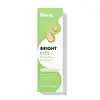What's inside
What's inside
 Key Ingredients
Key Ingredients

 Benefits
Benefits

 Concerns
Concerns

 Ingredients Side-by-side
Ingredients Side-by-side

Water
Skin ConditioningC13-15 Alkane
SolventPropanediol
SolventDiisostearyl Malate
EmollientCaprylic/Capric Triglyceride
MaskingSynthetic Fluorphlogopite
Glycerin
Humectant1,2-Hexanediol
Skin ConditioningCaffeine
Skin ConditioningCetearyl Alcohol
EmollientHelianthus Annuus Seed Oil Unsaponifiables
EmollientCoffea Arabica Seed Extract
MaskingAllantoin
Skin ConditioningTocopherol
AntioxidantNiacinamide
SmoothingHydrogenated Rapeseed Oil
EmollientFucus Vesiculosus Extract
EmollientPolymethyl Methacrylate
Cetearyl Glucoside
EmulsifyingVaccinium Macrocarpon Seed Oil
Skin ConditioningOctyldodecanol
EmollientHydroxyethyl Acrylate/Sodium Acryloyldimethyl Taurate Copolymer
Emulsion StabilisingPanax Quinquefolius Root Extract
AstringentHaematococcus Pluvialis Extract
AntioxidantAcrylates/C10-30 Alkyl Acrylate Crosspolymer
Emulsion StabilisingLecithin
EmollientBehenyl Alcohol
EmollientArachidyl Glucoside
EmulsifyingXanthan Gum
EmulsifyingPotassium Hydroxide
BufferingSodium Dilauramidoglutamide Lysine
HumectantArachidyl Alcohol
EmollientSodium Phytate
Hexylene Glycol
EmulsifyingSorbitan Isostearate
EmulsifyingMalic Acid
BufferingCaprylyl Glycol
EmollientTin Oxide
AbrasiveGlucose
HumectantAstaxanthin
Skin ConditioningMica
Cosmetic ColorantCI 77891
Cosmetic ColorantCI 77492
Cosmetic ColorantWater, C13-15 Alkane, Propanediol, Diisostearyl Malate, Caprylic/Capric Triglyceride, Synthetic Fluorphlogopite, Glycerin, 1,2-Hexanediol, Caffeine, Cetearyl Alcohol, Helianthus Annuus Seed Oil Unsaponifiables, Coffea Arabica Seed Extract, Allantoin, Tocopherol, Niacinamide, Hydrogenated Rapeseed Oil, Fucus Vesiculosus Extract, Polymethyl Methacrylate, Cetearyl Glucoside, Vaccinium Macrocarpon Seed Oil, Octyldodecanol, Hydroxyethyl Acrylate/Sodium Acryloyldimethyl Taurate Copolymer, Panax Quinquefolius Root Extract, Haematococcus Pluvialis Extract, Acrylates/C10-30 Alkyl Acrylate Crosspolymer, Lecithin, Behenyl Alcohol, Arachidyl Glucoside, Xanthan Gum, Potassium Hydroxide, Sodium Dilauramidoglutamide Lysine, Arachidyl Alcohol, Sodium Phytate, Hexylene Glycol, Sorbitan Isostearate, Malic Acid, Caprylyl Glycol, Tin Oxide, Glucose, Astaxanthin, Mica, CI 77891, CI 77492
Water
Skin ConditioningCaprylic/Capric Triglyceride
MaskingGlycerin
HumectantCetearyl Alcohol
EmollientGlyceryl Stearates
EmollientCetearyl Olivate
Leuconostoc/Radish Root Ferment Filtrate
AntimicrobialSorbitan Olivate
EmulsifyingPotassium Cetyl Phosphate
EmulsifyingSclerocarya Birrea Seed Oil
HumectantTetradecane
PerfumingButyrospermum Parkii Butter
Skin ConditioningAlbizia Julibrissin Bark Extract
MaskingDarutoside
Skin ConditioningHibiscus Sabdariffa Flower Extract
Skin ConditioningAvena Sativa Kernel Extract
AbrasiveXanthan Gum
EmulsifyingPotassium Sorbate
PreservativeSodium Dehydroacetate
PreservativeWater, Caprylic/Capric Triglyceride, Glycerin, Cetearyl Alcohol, Glyceryl Stearates, Cetearyl Olivate, Leuconostoc/Radish Root Ferment Filtrate, Sorbitan Olivate, Potassium Cetyl Phosphate, Sclerocarya Birrea Seed Oil, Tetradecane, Butyrospermum Parkii Butter, Albizia Julibrissin Bark Extract, Darutoside, Hibiscus Sabdariffa Flower Extract, Avena Sativa Kernel Extract, Xanthan Gum, Potassium Sorbate, Sodium Dehydroacetate
 Reviews
Reviews

Ingredients Explained
These ingredients are found in both products.
Ingredients higher up in an ingredient list are typically present in a larger amount.
This ingredient is an emollient, solvent, and texture enhancer. It is considered a skin-softener by helping the skin prevent moisture loss.
It helps thicken a product's formula and makes it easier to spread by dissolving clumping compounds.
Caprylic Triglyceride is made by combining glycerin with coconut oil, forming a clear liquid.
While there is an assumption Caprylic Triglyceride can clog pores due to it being derived from coconut oil, there is no research supporting this.
Learn more about Caprylic/Capric TriglycerideCetearyl alcohol is a mixture of two fatty alcohols: cetyl alcohol and stearyl alcohol. It is mainly used as an emulsifier. Emulsifiers help prevent the separation of oils and products. Due to its composition, it can also be used to thicken a product or help create foam.
Cetearyl alcohol is an emollient. Emollients help soothe and hydrate the skin by trapping moisture.
Studies show Cetearyl alcohol is non-toxic and non-irritating. The FDA allows products labeled "alcohol-free" to have fatty alcohols.
This ingredient is usually derived from plant oils such as palm, vegetable, or coconut oils. There is debate on whether this ingredient will cause acne.
Due to the fatty acid base, this ingredient may not be Malassezia folliculitis safe.
Learn more about Cetearyl AlcoholGlycerin is already naturally found in your skin. It helps moisturize and protect your skin.
A study from 2016 found glycerin to be more effective as a humectant than AHAs and hyaluronic acid.
As a humectant, it helps the skin stay hydrated by pulling moisture to your skin. The low molecular weight of glycerin allows it to pull moisture into the deeper layers of your skin.
Hydrated skin improves your skin barrier; Your skin barrier helps protect against irritants and bacteria.
Glycerin has also been found to have antimicrobial and antiviral properties. Due to these properties, glycerin is often used in wound and burn treatments.
In cosmetics, glycerin is usually derived from plants such as soybean or palm. However, it can also be sourced from animals, such as tallow or animal fat.
This ingredient is organic, colorless, odorless, and non-toxic.
Glycerin is the name for this ingredient in American English. British English uses Glycerol/Glycerine.
Learn more about GlycerinWater. It's the most common cosmetic ingredient of all. You'll usually see it at the top of ingredient lists, meaning that it makes up the largest part of the product.
So why is it so popular? Water most often acts as a solvent - this means that it helps dissolve other ingredients into the formulation.
You'll also recognize water as that liquid we all need to stay alive. If you see this, drink a glass of water. Stay hydrated!
Learn more about WaterXanthan gum is used as a stabilizer and thickener within cosmetic products. It helps give products a sticky, thick feeling - preventing them from being too runny.
On the technical side of things, xanthan gum is a polysaccharide - a combination consisting of multiple sugar molecules bonded together.
Xanthan gum is a pretty common and great ingredient. It is a natural, non-toxic, non-irritating ingredient that is also commonly used in food products.
Learn more about Xanthan Gum